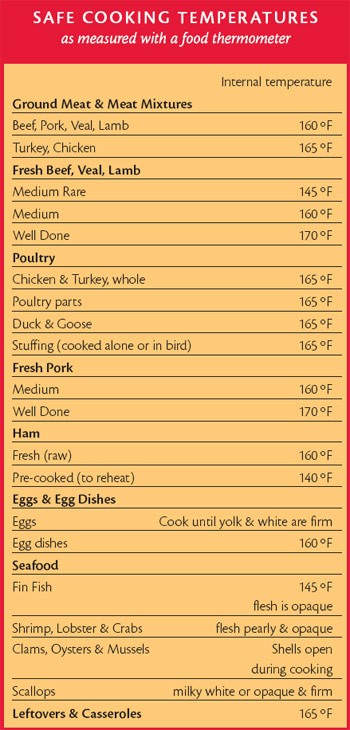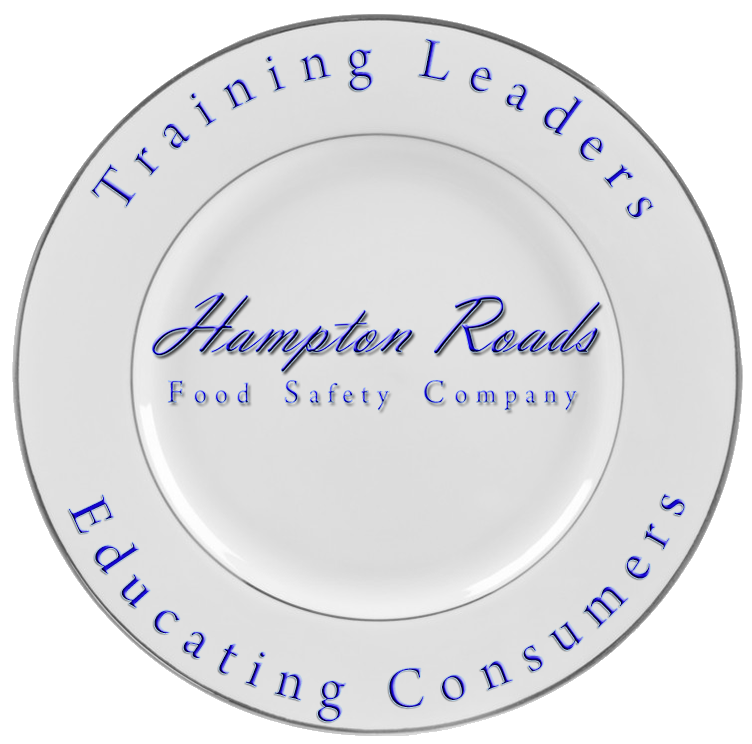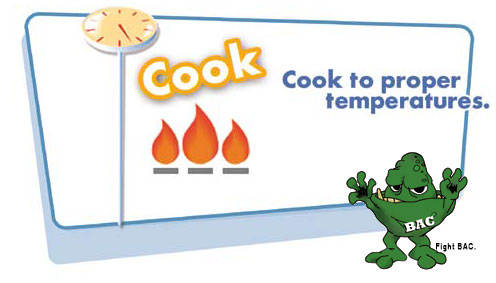COOK TO PROPER TEMPERATURES

Food is safely cooked when it reaches a high enough internal temperature to kill the harmful bacteria that causes foodborne illness. Use a food thermometer to measure the internal temperature of cooked foods. The best way to Fight BAC is to:
Use a food thermometer which measures the internal temperature of cooked meat, poultry and egg dishes, to make sure the food is cooked to a safe internal temperature. Cook roasts and steaks to a minimum of 145°F. All poultry should reach a safe minimum internal temperature of 165°F as measured with a food thermometer. Check the internal temperature in the innermost part of the thigh and wing and the thickest part of the breast with a food thermometer.
Cook ground meat, where bacteria can spread during grinding, to at least 160°F. Information from the Centers for Disease Control and Prevention (CDC) links eating undercooked ground beef with a higher risk of illness. Remember, color is not a reliable indicator of doneness. Use a food thermometer to check the internal temperature of your burgers.
Cook eggs until the yolk and white are firm, not runny. Don’t use recipes in which eggs remain raw or only partially cooked. Cook fish to 145°F or until the flesh is opaque and separates easily with a fork. Make sure there are no cold spots in food (where bacteria can survive) when cooking in a microwave oven. For best results, cover food, stir and rotate for even cooking. If there is no turntable, rotate the dish by hand once or twice during cooking. Bring sauces, soups and gravy to a boil when reheating. Heat other left overs thoroughly to 165°F.
COOK IT SAFE
When it comes to Convenience Foods, Cook It Safe
Many Americans’ freezers are stocked with fast, tasty convenience foods. While the shortest distance between the freezer and the table may be the microwave oven , not all convenience foods can be cooked in the microwave. Challenge yourself to Cook It Safe!
Prevent foodborne illness due to under-cooking frozen or other convenience foods with these four simple tips:
1. Read and Follow Package Cooking Instructions.
2. Know When to Use a Microwave or Conventional Oven.
3. Know your Microwave Wattage before Microwaving Food.
4. Always Use a Food Thermometer to Ensure a Safe Internal Temperature.


